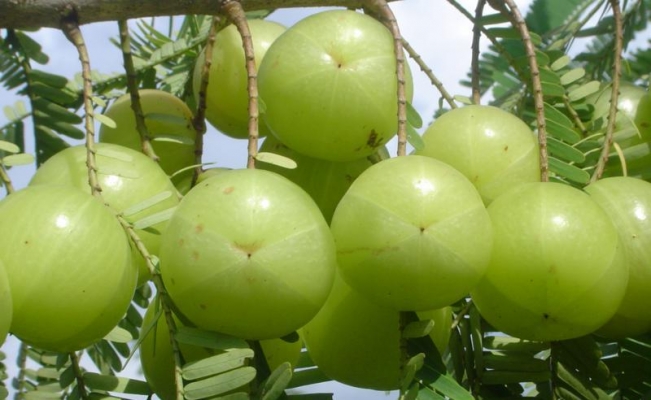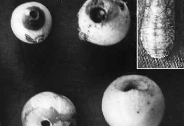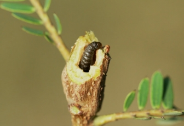Banarasi: Best quality variety, Early maturing variety, big size and has high vitamin content, shiny and is yellowish in color.
Green Tinzed: Fruits are green in color and is large in size.
Chakiya: The fruits are medium sized i.e. 33.4gm in weight and is egg shaped. It contains 789mg/100g of ascorbic content, 3.4% pectin content and 2% fiber content. It is used for making pickles and drying shreds.
Red Tinzed: medium to large sized fruits, flesh is red color from base.
White Streaked: White striped, medium size fruits.
Katha: Small sized, green in color having white strips on it.
Other state varieties:
Narendra 6: It is a mid-season crop from mid-November to mid-December. The fruits are medium in size i.e. 38.8gm in weight. The fiber content is lowest i.e. 0.8%, ascorbic content is moderate i.e. 100gm and have low phenolic content. It is used for making jams and candies.
Narendra 7 (Promising variety): It is a mid-season crop from mid-November to mid-December. The fruits are medium to large sized i.e. 44gm in weight and are greenish-white in color. The fiber content is 1.5% in this variety.
Krishna: It is also an early maturing variety, matures in mid-October to mid-November. It has medium to large sized fruits i.e. 44.6gm in weight, skin is smooth and stripe is well marked. The variety contains 1.4% fiber content.The average yield is 123 kg/tree.
Balwant: It is an early maturing variety which matures in the month of mid-November. It has flattened round shape fruits which are moderate in size. The fruits are soft and juicy having inner white flesh and outer skin is green in color. The average yield is 121 kg/tree.
NA-9: It is also an early maturing variety, matures in mid-October to mid-November. It has large sized fruits i.e. 50.3gm having oblong shape, skin is smooth and thin. The variety contains low fiber content i.e. 0.9% and highest ascorbic content i.e. 100gm. It is used for making jams, jellies and candies.
NA-10: It is also an early maturing variety, matures in mid-October to mid-November. It has medium to large sized fruits i.e. 41.5gm in weight, skin is rough and have 6 distinct segments. Flesh is whitish-green in color having 1.5% of fiber content.
Francis: It is a mid-season crop from mid-November to mid-December. It has large size fruit i.e. 45.8gm in weight having greenish white in color. Fiber content is moderate i.e. 1.5%. The variety also known as Hathi Jhool because of its drooping branches.
NA-5 (Kanchan): It is a mid-season crop from mid-November to mid-December. The fruits are small in size i.e. 30.2gm in weight. It contains 1.5% fiber content and has medium ascorbic acid content. The average yield is 121 kg/tree.
NA-4 (Krishna) and BSR-1 (Bhavanisagar) are also some of the popular varieties in other states.













